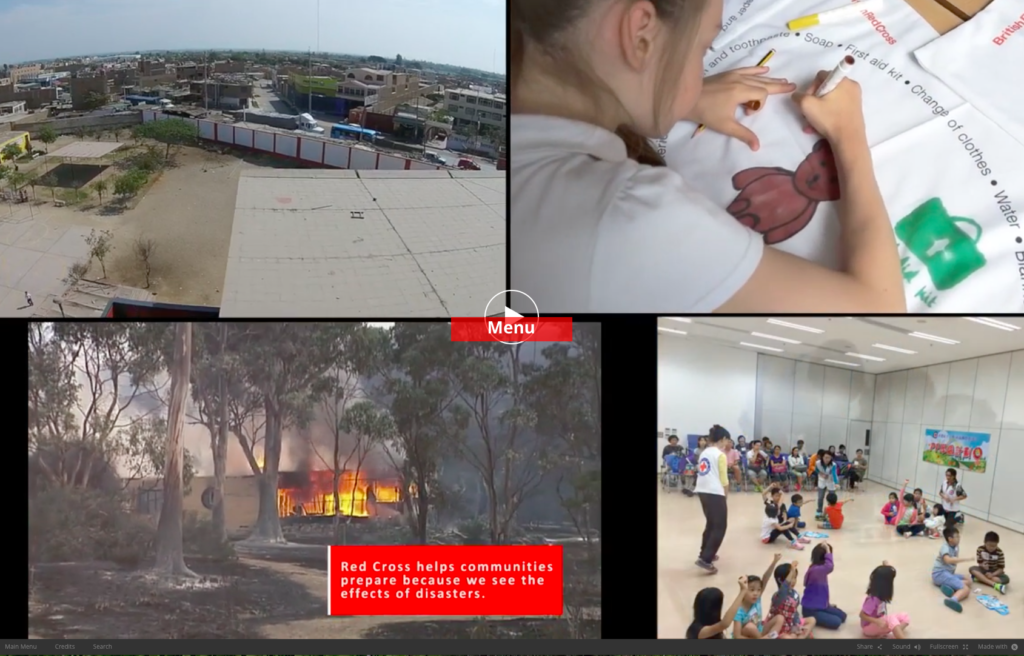global pillowcase project-idoc
Category Archives: International Development
Pillow Case Project International Pilot Peru: Video Case Study
In December 2014 we went to Peru for American Red Cross/ Global Disaster Preparedness Center as part of the evaluation team. Purpose was to develop a knowledge-rich video case study about the adaptation, implementation and results of the Pillow Case Project in Peru for use by other Red Cross chapters in Peru as they scale up, as well as by other countries considering the project. Six countries were part of the initial international pilot funded by Disney with more than double that number of participating countries anticipated for 2015. The Video Case Study is intended to be an evaluation and knowledge management product that informs design and implementation from country to country. The opportunity exists to develop additional videos from all the footage we captured and interviews we conducted, more targeted for advocacy and communications. Quimera has also constructed the initial installments for a video-based KM archive for the project based on the raw footage collected in the field.
The inclusion of a video drone as part of the equipment mix was a first for Quimera, very exciting. Aerial footage of the the earthquake and tsunami affected communities offered a very powerful perspective and helped to provide important visual context to the project.
One again Taylor Krauss was part of the Quimera team, and brilliant as always.
Click here to watch the full length Video Case Study.
USAID/ GEM-3 Project Evaluation Video: What Can We Learn about the Evaluation Process
Quimera was embedded with the Social Impact evaluation team for over three weeks to document Social Impact’s evaluation of the USAID Philippines Growth with Equity in Mindanao-3 Project. GEM-3 operated throughout Mindanao, with a special focus on the Autonomous Region in Muslim Mindanao (ARMM) and other conflict-affected areas of Mindanao. USAID’s Office of Learning, Evaluation and Research (PPPL/LER) wanted to document the GEM-3 evaluation process as a way to capture evaluation in action, to support and illustrate their new evaluation policy, and to share learnings about what makes a good evaluation, from design to implementation.
In this short snippet one of the evaluation team members discusses some of the challenges of trying to quantify project impact.
To view the entire video click the sections below
Click here to watch Part 1: Framing the Evaluation.
Click here to watch Part 2: Data Collection.
Click here to watch Part 3: Final Thoughts.
UBELONG/ Cusco Research Expedition Video Report: Intro
UBELONG partnered with Quimera to make video a part of their qualitative research toolkit during UBELONG’s Cusco Research Expedition. Quimera provided the team with some basic training prior to departure then it was up to the team to manage in the field. With a crazy schedule, packed with research and volunteering responsibilities, the team did a great job of documenting the expedition, capturing individual interviews, describing the process, initial thoughts, and overall experiences. While the camera rotated between team members the majority of the footage was shot by co-expedition team leader, and UBELONG Co-Founder, Raul Roman, a master behind the camera. Upon the team’s return to DC Quimera took the raw footage and edited the material into a video report which mirrored the same basic structure as the text-report.
UBELONG/ Cusco Research Expedition Video Report: Final Thoughts
More on UBELONG and their research expedition to Cusco, Peru.
SAIS/ Johns Hopkins: Video in Practical Research Methods
Professor Raul Roman, also Co-Founder of UBELONG, has invited me in to his class on Research Methods for a number of semesters to discuss the use of video in qualitative research and evaluation. Here’s a video we did from the very first time I came to class… lots of fun, and the students were fantastic.
Red Cross Tsunami Recovery: Identifying the Change
Quimera worked with the Tsunami Recovery Program to pilot an ethnographic video-based research method to help better understand program impact on beneficiaries and their communities in southern Thailand. Informed by participatory video the approach was intended to support evolving standards of beneficiary accountability, transparency, and stakeholder inclusion in program evaluation. A handheld camera was placed into the hands of beneficiaries in facilitated interview sessions, enabling beneficiaries to discuss and film various aspects of the program and its impacts on their lives.
Quimera and Red Cross were invited to present this video and a methods paper at the 2010 12th Annual Chicago Ethnography Conference as well as the 2013 American Evaluation Association Annual Conference. Quimera was invited to participate as part of an American Red Cross Panel, “Monitoring and Evaluation as Tools Towards Evidence-based Program Design” at the 2011 World Conference on Humanitarian Studies, Innovation Track. The video was also used as part of a presentation that Barese was invited to make at the 2012 International Program for Development Evaluation Training (IPDET) sponsored by World Bank Independent Evaluation Group and Carleton University.
UN Population Fund/ African Youth Alliance Video Report: M&E
UN Population Fund/African Youth Alliance Video Report: Botswana
In 2005 Quimera worked with the Director of Research at the UN Population Fund and their African Youth Alliance Program (AYA) to develop a project evaluation video report as part of program close-out and project documentation. As one of the first UNFPA projects designed as a full partnership with youth program leadership wanted to understand the impacts of youth participation on the project. Through a list serve Quimera was a resource for in-country project youth teams, offering training and support related to audio and visual production and interviewing. In-country youth teams conducted and filmed interviews and focus groups, sending all raw footage to Quimera for editing into a final video report.

